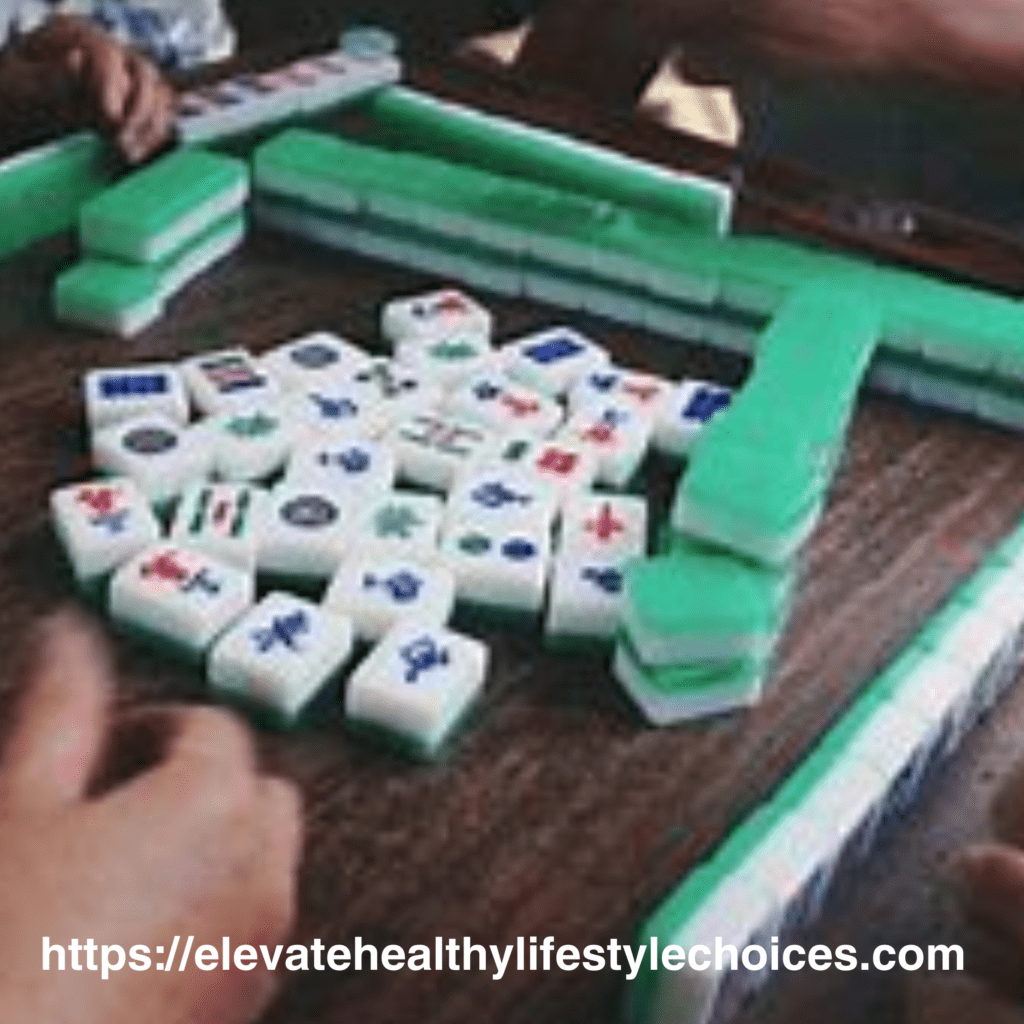
China has one of the richest, oldest continuous civilizations, spanning over 5,000 years. China’s reputation today is solidified by its global economic influence and technological contributions.
This dominant global player is home to over 1.4 billion citizens and is a force to be reckoned with. But what do Chinese people do for fun? Let’s dive into some ancient past times and see which new hobbies take China by storm.

Fun facts you didn’t know about China but should
China is a big and beautiful country with a varied landscape of stunning mountains, lakes, and deserts. China is home to over 3,000 skyscrapers. Shanghai alone has over 160. China is no stranger to a 996-work culture (a work day starting from 9 am and ending at 9 pm six days a week, primarily in the tech sector).
However, most companies adopt a 40-hour workweek schedule with 44 hours maximum. Everyone needs some time to unwind after a hard working day or week.
Interesting facts about China
China has over ten deserts, making up 20% of its demographic.
Paper (25-220 AD), gunpowder (9th century), the compass (202BC-220AD), and printing (7th century) were all inventions of the Chinese.
China’s national symbol is the giant panda, mainly in Sichuan province (Southwestern part), which is an endangered species.
China’s Belt and Road initiative attempts to bring together Asia, Europe, and Africa.
Mandarin is China’s official language (and the most widely spoken language), with more than one billion native speakers.
The Great Wall, built on China’s (northern) and Mongolia`s (southern) borders is over 13,000 miles/21,000 km long, dating back to the Ming Dynasty, in which trade improvements and porcelain made their debut along with theatrical advances (1368-1644).
China is no stranger to sand storms, which typically occur in the Spring.
In China, smog or hazy/cloudy days due to air pollution can last as little as one day to as many as five days.
Chongqing is the most inhabited city in China.
Chinese chopsticks were first used as cooking utensils almost 4000 years ago.

Tai Chi: The Art of Moving Meditation
Tai Chi (invented around the 12th century) also known as moving meditation or meditation in motion, is a type of Chinese martial art specializing in slow, gentle movements, deep breathing, and balance.
It combines mental relaxation with physical activity. Tai Chi’s emphasis on smooth, controlled movements, makes it an excellent choice for people of all ages.
Benefits of Tai Chi:
- Fortifies balance and coordination, diminishing the risk of falls.
- Stress reduction and promotes relaxation by creating calm within the body and mind.
- Strengthens flexibility and muscle, avoiding strain on the joints.
- Boosts mental focus/concentration and exemplifies overall well-being.
- Improves physical fitness
Chinese Martial Arts
Most martial arts in China stem from Taoism (harmony with the Universe) temples. Kung Fu is the adaptation of animal (horse, snake, frog) or mystical (dragon, immortal) fighting styles. Chinese martial arts were invented almost 5,000 years ago and consist of over one hundred styles.
The most popular include Shaolin Kung Fu (Buddhist philosophy), Tai Chi (Taoist philosophy), Qi Gong (Taoist philosophy), and Wing Chen (Taoism, Buddhism, Confucianism).
Benefits of Chinese Martial Arts
- Facilitate stress reduction
- Significantly improve general health and fitness.
- It may improve confidence and self-defense.
- It May improve aerobic capabilities and bone density.
There are many types of martial arts, making it easy to find a suitable version for anyone.
Chinese Outdoor activities
Because of China`s diverse landscape, many people seek to spend lots of time outdoors, especially in good weather. Hiking and cycling offer many breathtaking trails. Others on the list include trekking, canoeing, skateboarding, skiing, surfing, sports participation, and many more. Ping pong and Badmington are well-loved by people of all ages.
Being active provides many benefits, such as increased relaxation, engagement in the present moment (reduces worry), and promoting mental and emotional wellness.
Calligraphy: Brushstrokes of Tradition
Chinese calligraphy is the ancient art of beautiful handwriting using Chinese characters, practiced for thousands of years. This ancient and beloved pastime evolved from the early forms of Chinese script and became a highly respected art form linked to sophistication and self-expression.
Chinese calligraphy displays the harmony of brushstrokes, balance, and rhythm, reflecting exquisite beauty and the calligrapher’s personality and creativity.
Chinese calligraphy requires precise brush strokes and balance, highlighting the complexity of the Chinese writing systems. On the other hand, Japanese calligraphy (Shodo) incorporates both kanji (borrowed Chinese characters) and kana (native Japanese syllabary) and adopts a more flowing style where cursive strokes result in a lighter/simpler style.
Some noticeable benefits of calligraphy are stress reduction, enhanced concentration, and greater awareness of being presently minded. And it gives a sense of pride to master the art of Chinese calligraphy.

Mahjong: Strategy and Social Connection
Mahjong is an ancient Chinese tile-based game played by four players, where the goal is to form sets of matching or sequential tiles. The game consists of 144 tiles with symbols or Chinese characters and two dice. Each player starts with 13 titles.
Players draw and discard tiles in turns, trying to create a winning hand with four sets of three tiles (like three of a kind or a run) and a pair. The game ends when one player completes their hand, calling Mahjong. Mahjong is a game of strategy and luck, excellent for social bonding and fun. There are many variations of Mahjong.
Dragon Boat Racing

Dragon boat racing is a traditional and popular sport in China with deep cultural, historical, and mystical significance. It involves teams of rowers paddling in long, narrow boats decorated with the head and tail of a dragon. In Chinese creatures, dragons are symbols of power, strength, and good fortune.
Historical Significance
Origin: Dragon boat racing dates back several centuries. Some believe it is closely associated with the legend of Qu Yuan, a poet who lived during the Warring States period (475–221 BCE). According to legend, Qu Yuan committed suicide by drowning himself in the Miluo River after being exiled for opposing corruption in his kingdom. Local people raced out in boats, beating drums and throwing rice into the water to scare away fish and evil spirits in an attempt to save him or recover his body, which was never recovered. This event is commemorated annually during the Duanwu Festival (known as the Dragon Boat Festival).
Cultural Significance: The dragon boat race is not only a sport but also a cultural celebration that honors Qu Yuan and personifies the community’s respect for loyalty and patriotism. The dragon boat race takes place on the 6th day of the 5th month of the Chinese lunisolar calendar (normally in June). This event is a major holiday in China. Cities and towns participate in the race throughout the country.
Boat designs
Design: Dragon boats are usually long wooden boats and come in different sizes. They can be 12–30 meters long and accommodate up to 80 paddlers in larger boats, though modern competitive boats often carry around 20 paddlers.
Decoration: The boats are cleverly decorated with the head and tail of a dragon and painted in bright, vibrant colors. Other features that identify with the mystical dragon creature include scales and other noticeable features.
The Race
Teams: Paddlers, one drummer, and a steersperson make up a team. The drummer sits at the front of the boat, beating a large drum to set the rhythm for the paddlers, while the steersperson stands at the back, guiding the boat’s direction.
Competition: The races occur on rivers, lakes, or coastal waters, with teams competing to reach the finish line first. The competition can be fierce. Teams place a high emphasis on coordinating their paddling to the beat of the drum, striving for speed and synchronization.
Modern Dragon Boat Racing
Global Sport: Dragon boat racing or its variant, has grown into an international sport, with competitions held worldwide. Today, many countries enjoy dragon boat associations and events, promoting the cultural and competitive aspects of the sport.
Community and Spirit: Beyond the competition, dragon boat racing is a team-oriented activity, encouraging brotherhood and discipline among participants. It is not just about winning but celebrates the spirit of unity.
Symbolism & Meaning
Dragon Symbol: The dragon in Chinese culture is a symbol of optimism, strength, and courage. The dragon boat, therefore, embodies these qualities, and participating in a dragon boat race is seen as invoking the spirit of the dragon.
Tea Ceremony: Mindfulness in a Cup
The Chinese tea ceremony is a traditional ritual that highlights the art of tea preparation and brewing techniques. The quality of tea leaves, water, and brewing devices play a role in a harmonious and tranquil tea ceremony. The ancient practice, rooted in the Tang and Song dynasties became a symbol of peace and community.
The Chinese tea ceremony is more relaxed and informal. The taste and aroma of the tea are vital. Teas such as oolong, green, or black teas are commonly used.
In contrast, the Japanese tea ceremony (chanoyu) is a formal, structured ritual deeply influenced by Zen Buddhism. It focuses on mindfulness, artistic setup, and simplicity, often using matcha (a strong-flavored powdered green tea).
The Japanese ceremony involves specific, practiced movements and a spiritual connection to the moment, with a strong emphasis on the seasonal elements present in the setting.
While the Chinese tea ceremony is more about the enjoyment of tea, the Japanese tea ceremony is a spiritual practice with a deep focus on ritual, discipline, and aesthetics.
Chinese Cooking
Chinese cuisine has reached the four corners of the earth. There are many different types of Chinese cuisines, the top being Cantonese/Guangdong (mostly sweet and light flavors), Sichuan (spicy and bold), and Hunan (tasty and hot). According to statistics, 31.46% of people cook meals at least five days a week.
There is an increase in young people preparing their meals because of fear of hygiene concerns. Many people prefer fresh ingredients for healthier meals.
Some of the top dishes enjoyed throughout China are:
- Peking duck: originated in Beijing, this dish involves roasting the duck to perfection for a crispy crust and tender meat.
- Sweet and sour pork: this classical dish is especially beloved in Shanghai.
- Kung Pao Chicken: this dish includes diced chicken cooked with cucumber, peppers, and peanuts.
- Ma Po Tofu: this dish may contain tofu, ground beef, Sichuan peppers, and hot and spicy seasonings.
- Chow Mein: fried noodles with chop suey. Beef Chow Mein and Sour and Spicy Chow Mein are very popular.
- Char Siu: barbecue pork served with rice is a traditional Cantonese dish.
- Dim Sum: a popular Cantonese snack with many variants, including dumplings, wontons, spring rolls, etc.
Chinese Knotting: Weaving Art and Symbolism
Chinese knotting is a traditional form of decorative art that involves creating intricate patterns by tying a single cord or silk thread into exquisite shapes and designs. Each knot is made without cutting the cord and often carries symbolic meaning, such as good fortune, longevity, or prosperity.
Many believe that the knots were used to record information or send messages as a communication tool before writing became commonplace.
This craft dates back over a thousand years, and it is often used for decorations during festivals or as gifts to convey well wishes. Common knots include the Double Coin Knot, the Cloverleaf Knot, and the Butterfly Knot, among many others. The knots are used as ornaments, jewelry, or home decorations.
Chinese Karaoke
Originally, karaoke stemmed from Japan in 1971 by Daisuke and is popular in many Asian countries. However, Chinese karaoke is also known as KTV (Karaoke TV). It is popular in China, especially among the youth.
You can rent booths at a KTV ranging from small to large and even a themed booth. There are tables and chairs, headphones, and mics for your use. English songs are available, but be prepared to hear some Chinese songs (about love or painful breakup).
Drinking is the norm, perhaps to give people the guts to sing whether they sing like an angel or not. Karaoke is a popular choice for the evening or on weekends. It is a way to bond with friends, throw caution to the wind, and have a good time.
China’s gaming culture
China’s gaming culture has seen massive growth with over half a million gamers. In 2014, China (partially) lifted its ban on gaming hardware. Before this, the government was concerned about children becoming digital addicts and performing poorly in its school system. That also leads to many illegal downloads or black-market resources.
Mobile games are rapidly increasing in popularity. However, the Chinese gaming policies, especially restrictions on content, make it more difficult for new games to break into the industry. The 2027 predictions indicate a possible increase of users up to 28.2 %.
Unusual Chinese Hobbies
Other peculiar Chinese Hobbies include:
- Cricket fighting
- Bird singing competitions
- Kite flying
- Bird walking
Conclusion
China is one example of a continuous ancient civilization today. As an ancient civilization, China has retained many customs and traditions for centuries. Many hobbies like Tai Chi, Chinese calligraphy, dragon boat racing, and tea ceremonies are some of its ancient pastimes still available today. Some newer hobbies like Karaoke and Gaming are rapidly growing.
China also has a 996-work culture (work 9 am-9 pm six days a week for select sectors like tech). Research shows people who engage in passionate hobbies may increase their life span by up to 15 years. Hobbies may help release stress and improve your mental and overall wellness.
FAQs
1. Why is tai chi a popular hobby in China?
Tai chi is popular because it promotes physical and mental health and relaxation and may help improve balance. Tai Chi is a traditional martial art practiced widely, especially among older generations.
2. How important is calligraphy in Chinese culture?
Calligraphy is an art form that expresses beauty, history, and philosophy. Calligraphy is a common hobby for those interested in cultural heritage.
3. What role does tea play in Chinese hobbies?
Tea is central to Chinese culture, and many enjoy tea tasting and ceremonies as a hobby. It’s a way to relax, connect with tradition, enjoy good tea, and socialize.
4. Why is karaoke a popular hobby in China?
Karaoke, known as KTV in China, is popular because it’s a fun social activity. People gather with friends or colleagues to sing, relax, and bond in private karaoke rooms.
5. How is Chinese cooking considered a hobby in China?
Chinese cooking is a beloved hobby that allows people to explore diverse regional cuisines and traditional recipes. Cooking is a way for many to connect with family, culture, and creativity in the kitchen.
You may also like:
The Ugly Side Effects of Stress and What You Can Do About It | Elevate Healthy Lifestyle Choices
Best Immune System Boosters | Elevate Healthy Lifestyle Choices
Can Stretch Marks be Removed? | Elevate Healthy Lifestyle Choices
